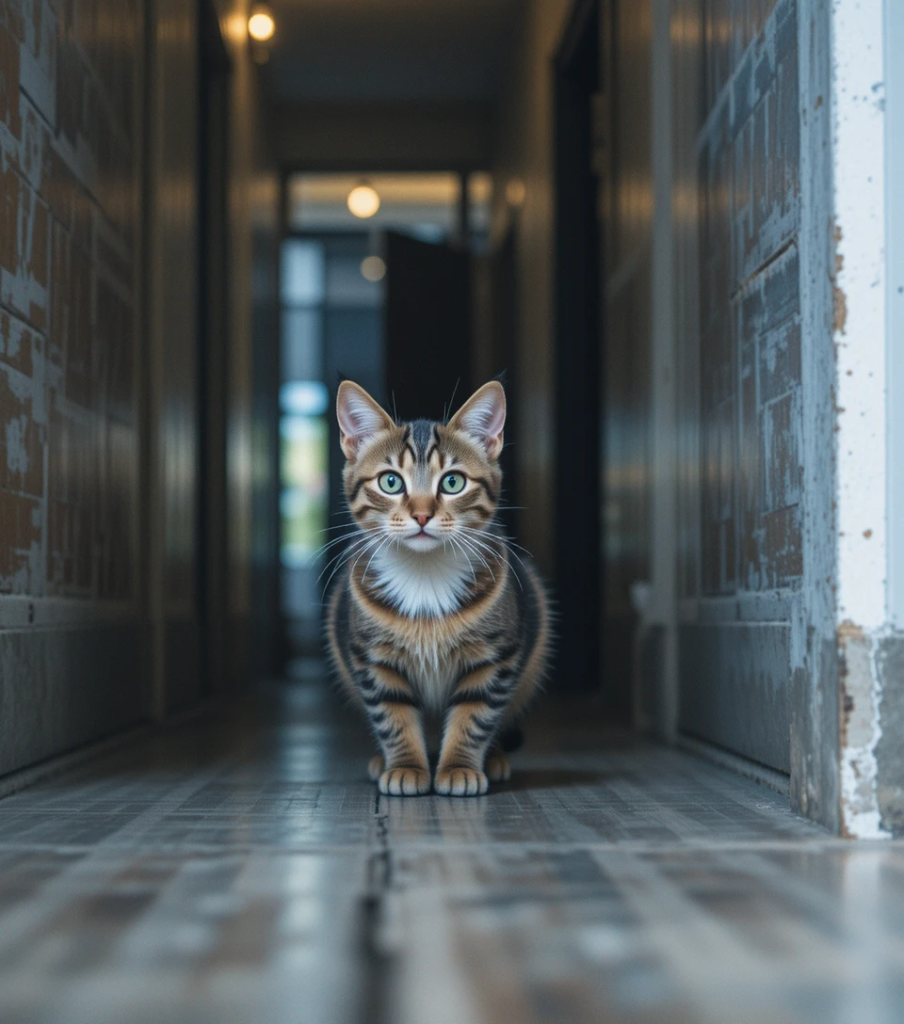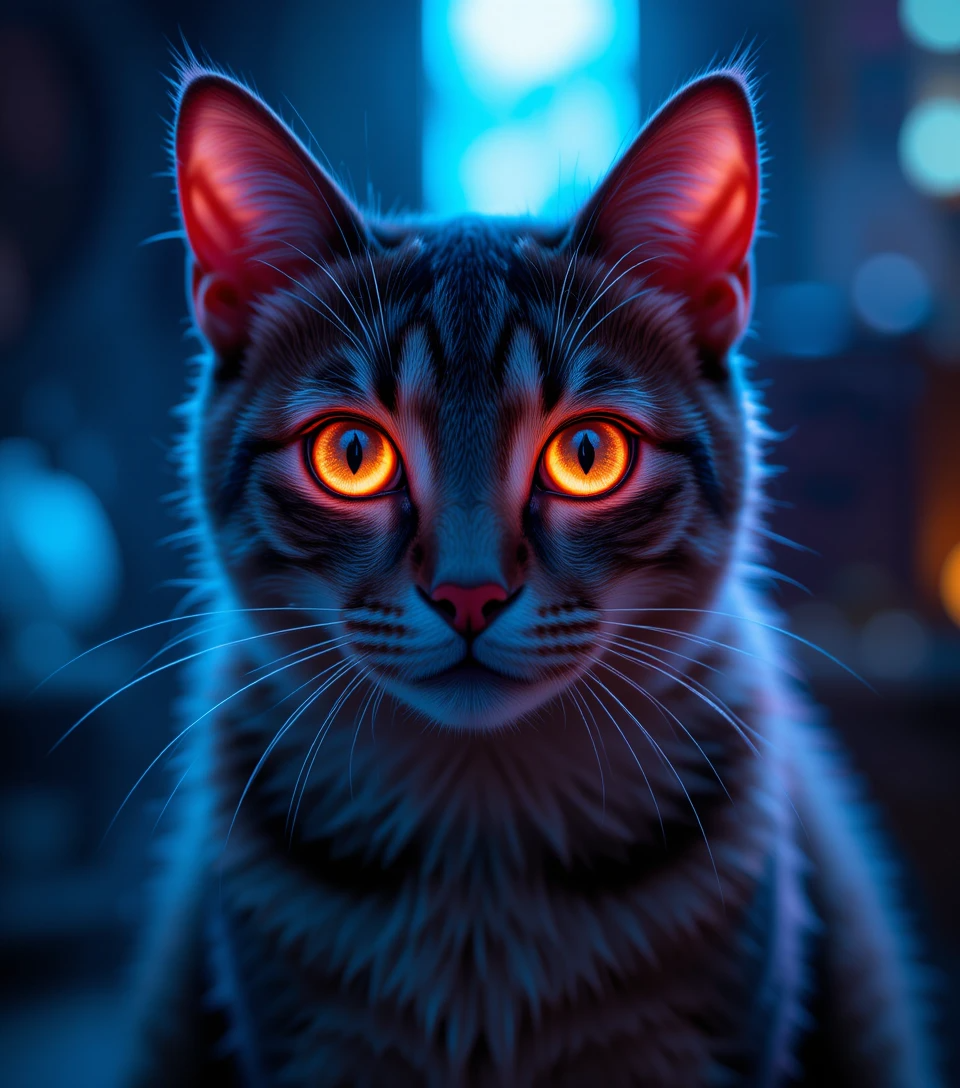Cats live in a world of hidden colors, enhanced motion, and eerie reflections—one that humans can’t even begin to see with the naked eye. Have you ever noticed your cat staring at something invisible or reacting to what seems like thin air? While it might look spooky, science offers shocking truths behind what cats truly see. In this article, we explore the incredible vision of cats, how it compares to ours, and the hidden aspects of the world they detect.
How Cat Eyes Work
Cats’ eyes are biological masterpieces. While humans rely on cones (for color) and rods (for low light), cats have far more rods than cones. This means they excel at seeing in dim light but sacrifice vibrant color.
Additionally, cats have a reflective layer behind the retina called the tapetum lucidum, which bounces light back through their photoreceptors—boosting night vision. This is why their eyes often glow in the dark.
Color Perception: Are Cats Colorblind?

Cats aren’t completely colorblind—but their color range is limited. While humans have three types of cone cells (red, green, blue), cats likely have just two, similar to a colorblind human. This means cats see the world in muted blues and greens but struggle with reds and pinks.
Cats and Night Vision
Here’s a shocking truth: Cats can see in light levels six times lower than what humans need. Their rod-heavy retinas and wide pupils allow them to gather every bit of ambient light—ideal for their crepuscular (dawn and dusk) hunting habits.
Ultraviolet Vision: What Cats See Beyond Us
Here’s where things get even weirder: Cats may see ultraviolet (UV) light, which is invisible to humans. This ability helps them detect hidden markings on flowers, trails left by urine, and patterns in fur or feathers—unlocking a visual world beyond human reach.
Motion Detection and Peripheral Vision
Cats detect even the slightest twitch—thanks to their sharp motion sensitivity and wide field of view. While humans have a 180° field of vision, cats reach about 200°, giving them better peripheral awareness, crucial for detecting prey or threats.
How Feline Vision Supports Hunting Instincts
Cat vision evolved for survival. Their low-light and motion-detecting capabilities make them deadly efficient hunters—even when domesticated. Their eyes work like silent radars, locking onto movement and tracking prey with astonishing precision.
Do Cats See Ghosts? Debunking the Myth

Many believe cats can sense spirits or ghosts, especially when they stare at nothing. In reality, they’re likely detecting UV light, flickers, or sounds outside the human range. Their enhanced senses—not supernatural abilities—explain these odd behaviors.
Real-World Examples of Cat Vision in Action
Whether it’s detecting flea dirt under UV or navigating obstacles in the dark, cat vision has real benefits. One owner noticed their cat staring at a spider in a dark corner long before it became visible to anyone else—proving how much more cats can see.
Conclusion: A Hidden World Revealed
Cats live in a world that’s quieter, darker, and often more vivid—just not in the ways we expect. By understanding how their eyes work, we gain insight into their behaviors, hunting habits, and mysterious stares. What seems strange to us is often completely natural to them.
❓ 10 Frequently Asked Questions
- Can cats see things that are invisible to humans?
Yes, cats can detect UV light, subtle movement, and low-light details invisible to humans. - Do cats have better night vision than humans?
Absolutely. Cats can see in light levels six times dimmer than humans need. - Are cats colorblind or do they see in color?
Cats can see colors, but their vision is limited mostly to blues and greens. - What is the tapetum lucidum and why is it important?
It’s a reflective layer that enhances night vision by bouncing light back through the retina. - Can cats see UV light?
Research suggests they can, allowing them to perceive patterns we can’t. - Why do my cat’s eyes glow in the dark?
This is due to the tapetum lucidum reflecting light to enhance vision in darkness. - Is it true that cats can see ghosts?
No scientific evidence supports this. Cats likely respond to light or movement we can’t see. - What colors do cats see best?
Blue and green hues stand out the most; red tones are difficult for them to distinguish. - How does a cat’s vision help them hunt?
Cats use motion detection, wide peripheral vision, and low-light sensitivity to stalk prey. - Do cats see more detail than humans?
Not necessarily. Cats see better in the dark, but human eyes are better at detail in bright light.

